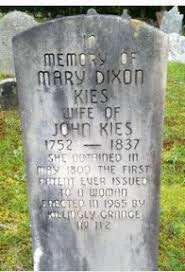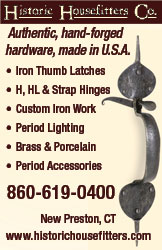
Home
 Structural Products & Services, Stairlifts
Structural Products & Services, Stairlifts
Furniture, Clocks,
Accessories
Antiques, Folk Art,
Fine Art, Auction Houses
MARY DIXON KIES; ONE OF THE FIRST AMERICAN WOMEN TO BE GRANTED A PATENT
by Anya Laurence
|
Mary Dixon Kies, born March 21, 1752 in Killingly, Connecticut, was an artist and inventor of a new method for braiding straw. This was needed, as the trade between Europe and the Unites States was halted because of wars... making the hat business all but finished. There needed to be a new method that housewives could use to make their own bonnets. Mary’s invention became popular and started a new local business, which produced $500,000 in revenue (9 million dollars today) in Massachusetts alone. Her new way of weaving straw with thread and silk was successful, and she applied for a patent which was signed by President James Madison. |
| Mary was the daughter of John Dixon, an Irishman from Ulster, and his third wife, Janet Kennedy. Her first husband was Isaac Pike I, with whom she had a son, Isaac Pike II in 1770. Following his demise she married John Kies (1750-1813). In 1813 she went to live in Brooklyn, NY, with her son from that marriage, Daniel Kies. She died there in 1837 at the age of 85. | |
Although Mary was not the first American woman to step into the hat-making business, as in 1798 a New England woman named Betsy Metcalf had devised a straw-braiding method, Mary was the first to petition for a patent. In those days women were not considered able to own property or anything of value. Betsy Metcalf decided not to apply for one because of these restrictions. Mary Kies changed all that on May 5, 1809 when she applied for a patent and was rewarded for her tenacity by a personal letter from Dolley Madison. |
 |
Mary’s straw-braiding technique was important in making inexpensive bonnets, and her work greatly helped New England’s hat business, which had been failing for years. Unfortunately new fashion made it impossible for Mary to make what she should have financially, and she died in poverty in 1837. A fire at the United States Patent Office in 1836 destroyed her original patent. |
|
Mary Kies’ great-granddaughter, Delia Taylor, of Providence, Rhode Island, donated samples of the straw fabric woven by Mary to the Danielson Public Library, where they can be viewed today. There are others at the Wadsworth Athenaeum in Hartford CT. There is also a Kies Rd. in Killingly. Perhaps her homestead was located on this street. Mary Dixon Kies was inducted, in 2006, into the National Inventors Hall of Fame. |
 |






